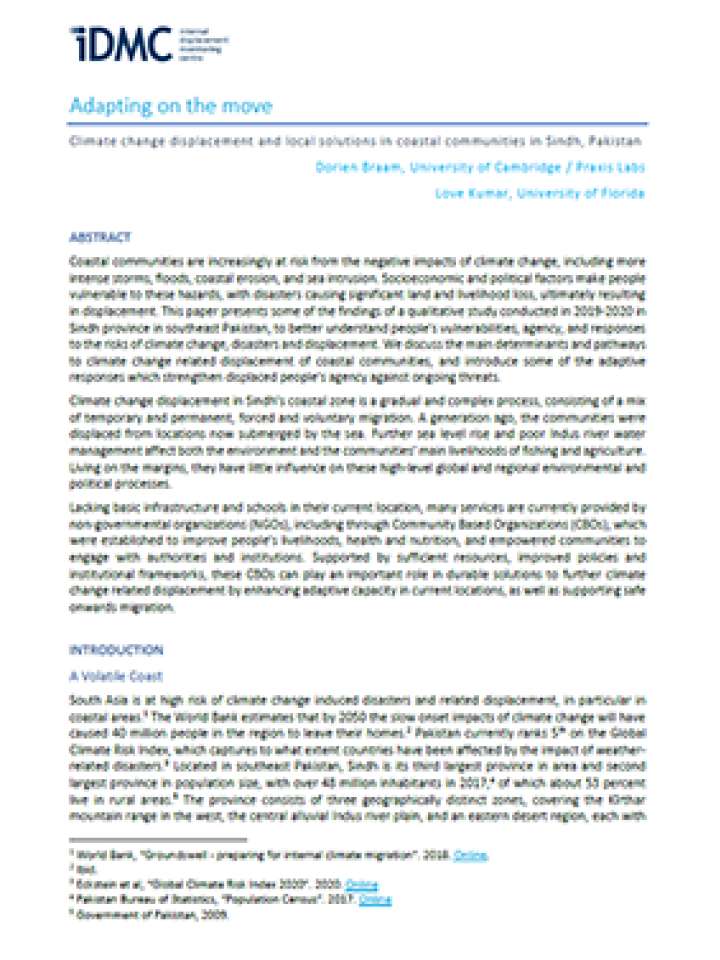Adapting on the move: Climate change displacement and local solutions in coastal communities in Sindh, Pakistan
This paper discusses how coastal communities are increasingly at risk from the negative impacts of climate change, including more intense storms, floods, coastal erosion, and sea intrusion. Socioeconomic and political factors make people vulnerable to these hazards, with disasters causing significant land and livelihood loss, ultimately resulting in displacement. This paper presents some of the findings of a qualitative study conducted in 2019-2020 in Sindh province in southeast Pakistan, to better understand people’s vulnerabilities, agency, and responses to the risks of climate change, disasters, and displacement. We discuss the main determinants and pathways to climate change related displacement of coastal communities and introduce some of the adaptive responses which strengthen displaced people’s agency against ongoing threats.
Climate change displacement in Sindh’s coastal zone is a gradual and complex process, consisting of a mix of temporary and permanent, forced, and voluntary migration. A generation ago, the communities were displaced from locations now submerged by the sea. Further sea level rise and poor Indus river water management affect both the environment and the communities’ main livelihoods of fishing and agriculture. Living on the margins, they have little influence on these high-level global and regional environmental and political processes.
Lacking basic infrastructure and schools in their current location, many services are currently provided by non-governmental organizations(NGOs), including through Community Based Organizations (CBOs), which were established to improve people’s livelihoods, health and nutrition, and empowered communities to engage with authorities and institutions. Supported by sufficient resources, improved policies and institutional frameworks, these CBOs can play an important role in durable solutions to further climate change related displacement by enhancing adaptive capacity in current locations, as well as supporting safe onwards migration.
Explore further

